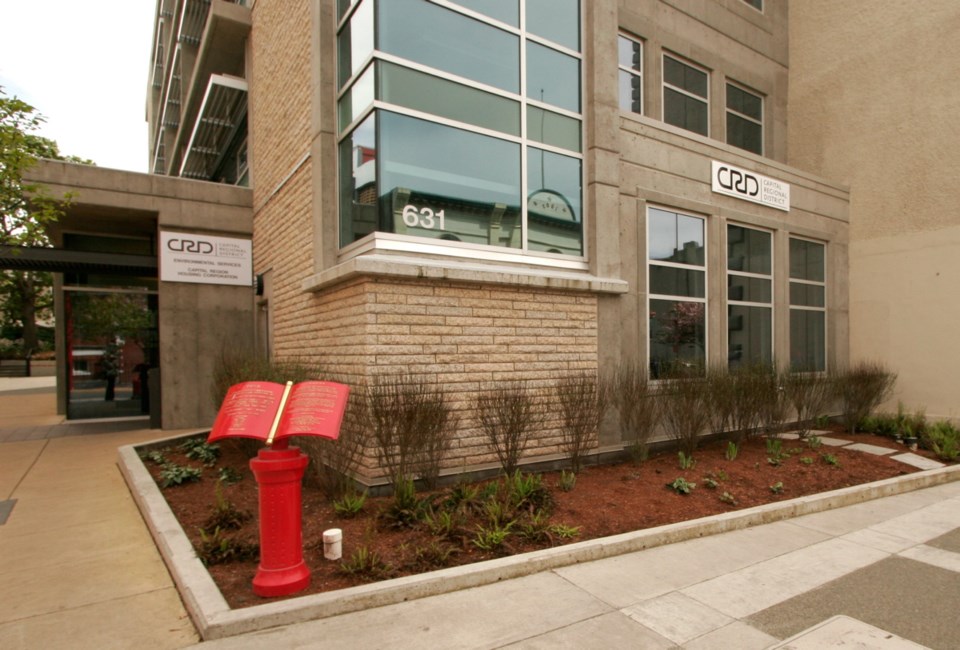 Forced at bayonet point to finally, finally, finally make a decision, local politicians approved the biggest spending project in the region’s history on Wednesday.
Forced at bayonet point to finally, finally, finally make a decision, local politicians approved the biggest spending project in the region’s history on Wednesday.
Really, they had no choice.
Having had the steering wheel wrested from their hands by the provincial government, and with a half billion dollars worth of grants at risk, rubber-stamping the $765-million sewage-treatment proposal was the Capital Regional District board’s only logical option.
So why were we on tenterhooks until the actual vote?
Because we’ve seen parochial, dysfunctional governance defeat logic before. Because until the province forced this train back on track, the seven affected municipalities were toying with a two-plant plan that — based on politics, not sound engineering or economics — might have cost an extra $250 million. Because it took two years to circle back to a solution that had been shelved when Esquimalt, balking at being bullied by the other players, chucked a grenade in the pool.
Jim Anderson of the Amalgamation Yes advocacy group was at Wednesday’s vote. To him it was just another example — albeit a high-profile, expensive one — of the hundreds of complicated inter-municipal deals that it takes to govern the region.
They’re called integrated service delivery agreements, covering everything from parks and policing to stormwater runoff, cemeteries and the emergency radio system.
This summer, Anderson was stunned to discover there are a mind-boggling 356 such pacts — 155 administered by the regional district, plus another 201 between various groupings of our 13 municipalities — in which our various governments formally hammer out the details of how to work together.
Local politicians will argue — rightly — that the agreements prove that most of the time, municipal authorities co-operate well, quietly figuring out how to provide services.
Anderson, though, sees the multiplicity of deals as evidence of a system that is “dysfunctional, unaccountable and out of control.”
“There’s this whole underground bureaucracy,” he said Wednesday. Committees, meetings, money and nobody in charge.
But to some, the real question isn’t whether the municipalities co-operate well, but why they should have to. No matter how willing they are to play nicely, the fractured nature of local governance ensures every single integrated service delivery agreement involves nailing down details and answering questions that wouldn’t need to be dealt with in most other medium-sized Canadian cities.
Take policing. Every time police departments form an integrated unit, there’s a complicated negotiation process where they figure out the nuts and bolts: Who provides the police cars? Who pays the insurance? Who provides the office space and how much does that count against the budget? Who pays for the support staff, the phones, the photocopiers, and whose computer system will they use?
Anderson counted 42 individual agreements covering policing in the region and another 29 related to fire protection. Every one involves a process like that.
He wrote a blog post that painted a picture of a disjointed system with no standard model for the inter-municipal agreements — different voting structures, varying financial commitments, and little rhyme or reason to the partnerships. “Can anyone explain why Esquimalt and Victoria share a common police force, yet Esquimalt uses Saanich as their fire dispatch centre?” he asks.
And why do we have three fire and three police dispatch centres? Why do Saanich Peninsula and West Shore municipalities have joint recreation facilities, but those in the core act independently? How many of those intermunicipal agreements give taxpayers of one community a free ride at the expense of the another?
Agreements are cobbled together by some jurisdictions for particular purposes (yard waste dropoff for residents of Esquimalt and View Royal, say), yet in areas where you might think co-ordination would be a priority, it’s lacking; the business community has long complained bitterly about confusing and inconsistent rules around land use, building standards and business licensing. A lack of regional funding leaves us without arts facilities on par with those of other cities; only Victoria, Saanich and Oak Bay contribute to the CRD-owned Royal Theatre, while Victoria alone pays for McPherson Playhouse.
And let’s not even get started about the constipation on our roads, where no individual municipality wants to take responsibility for the region’s traffic, and a few actively try to discourage outsiders from commuting on their roads.
Don’t look for logic in Dysfunction-by-the-Sea.



